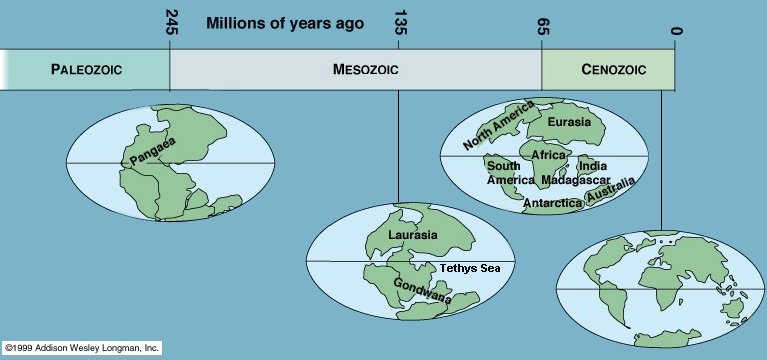
Geological History of Continental Drift

Land masses have coalesced and separated in several cycles over Earth's geological history. In the most recent cycle, all land masses formed a single supercontinent, Pangaea, by the end of the Paleozoic. Pangaea gradually separated during the Mesozoic into two smaller supercontinents, Laurasia in the north and Gondawanaland in the south, separated by the Tethys Sea in the east.
Modern continental masses are recognizable by the beginning of the Cenozoic, but were joined in different patterns than at present. For example, Australia and South America were joined through Antarctica in the early Cenozoic, the Indian subcontinent joined Eurasia only ~10MYBP, North and South America became joined for the first time 4 ~ 5 MYBP, and the Bering Strait between western North America and eastern Eurasia opened 3 ~ 4 MYBP. Continents continue to drift: the Bering Strait has been a landbridge at various times in the Holocene.